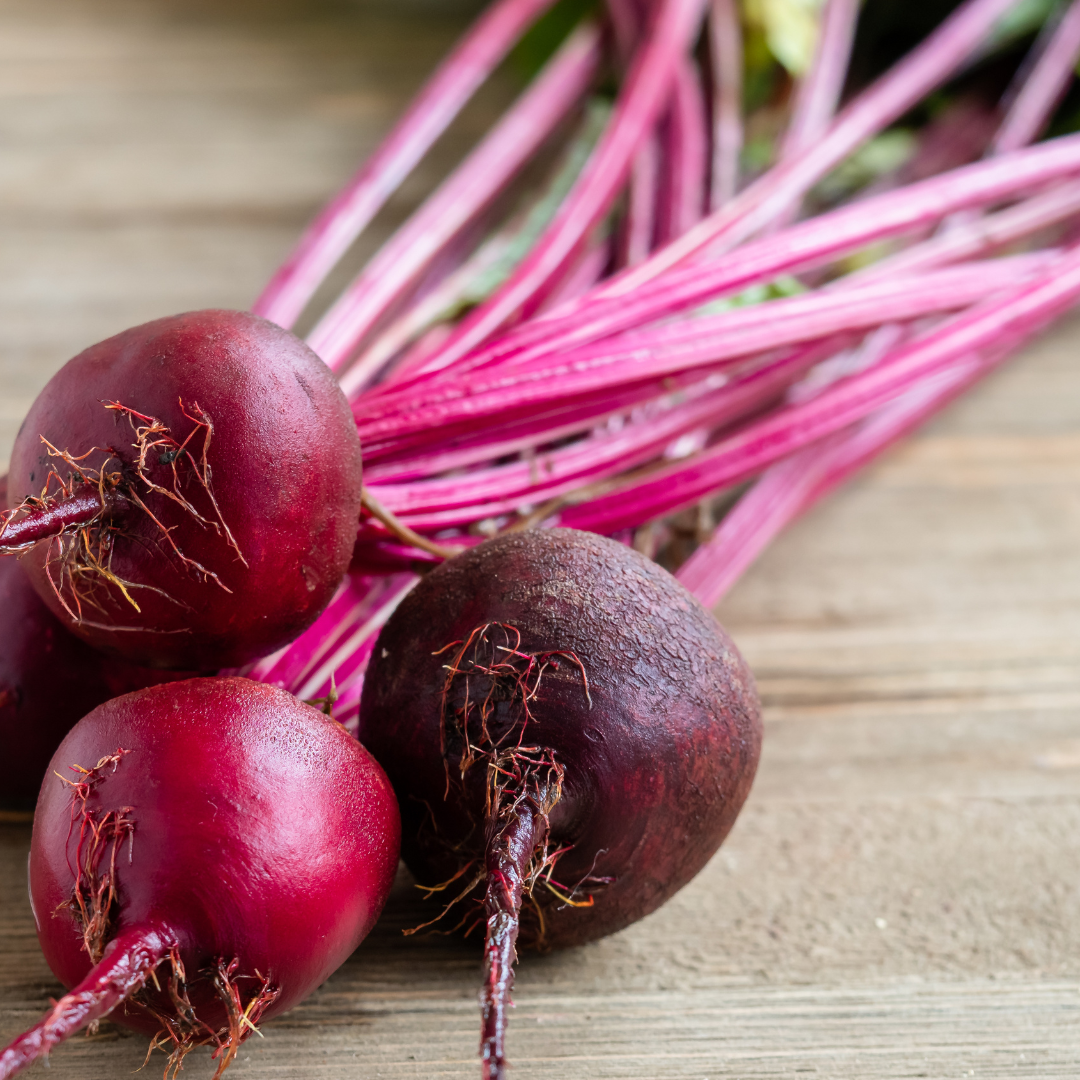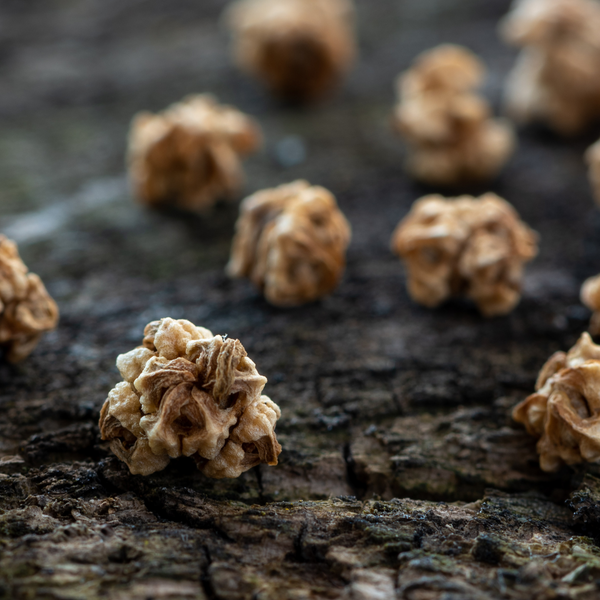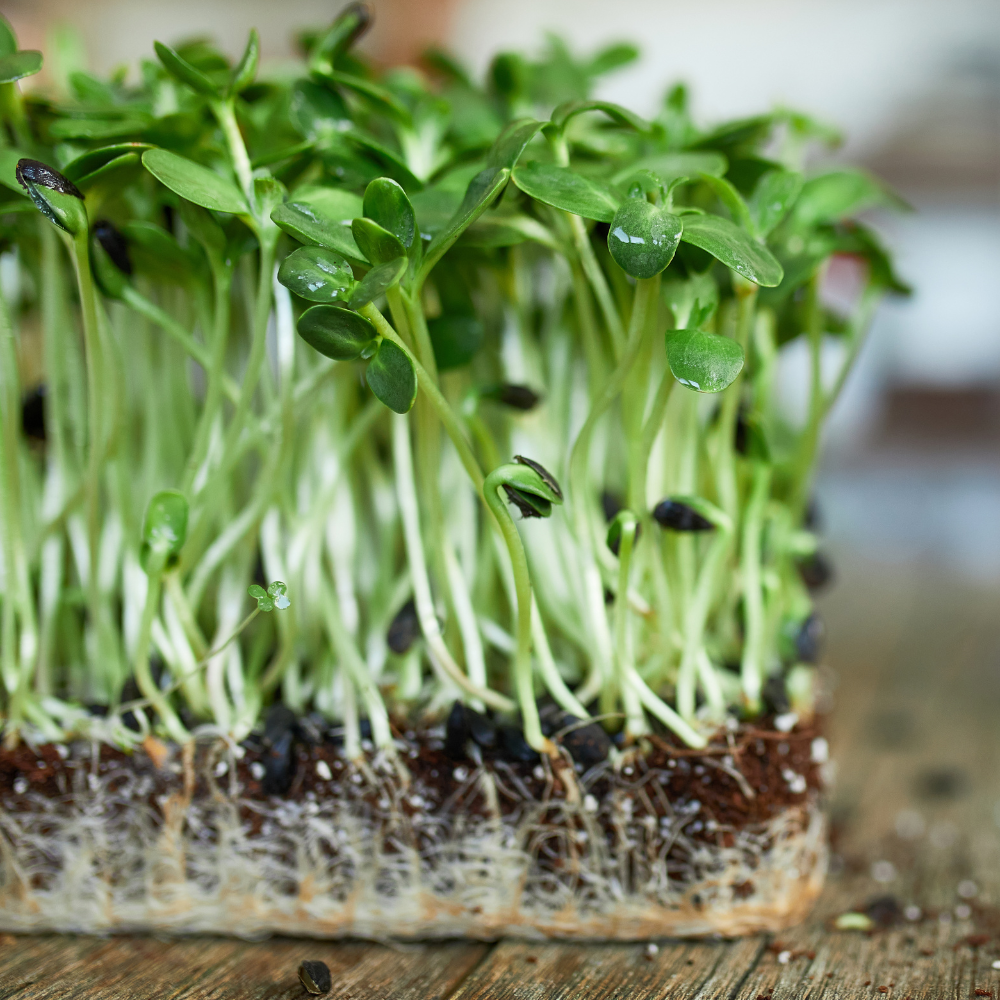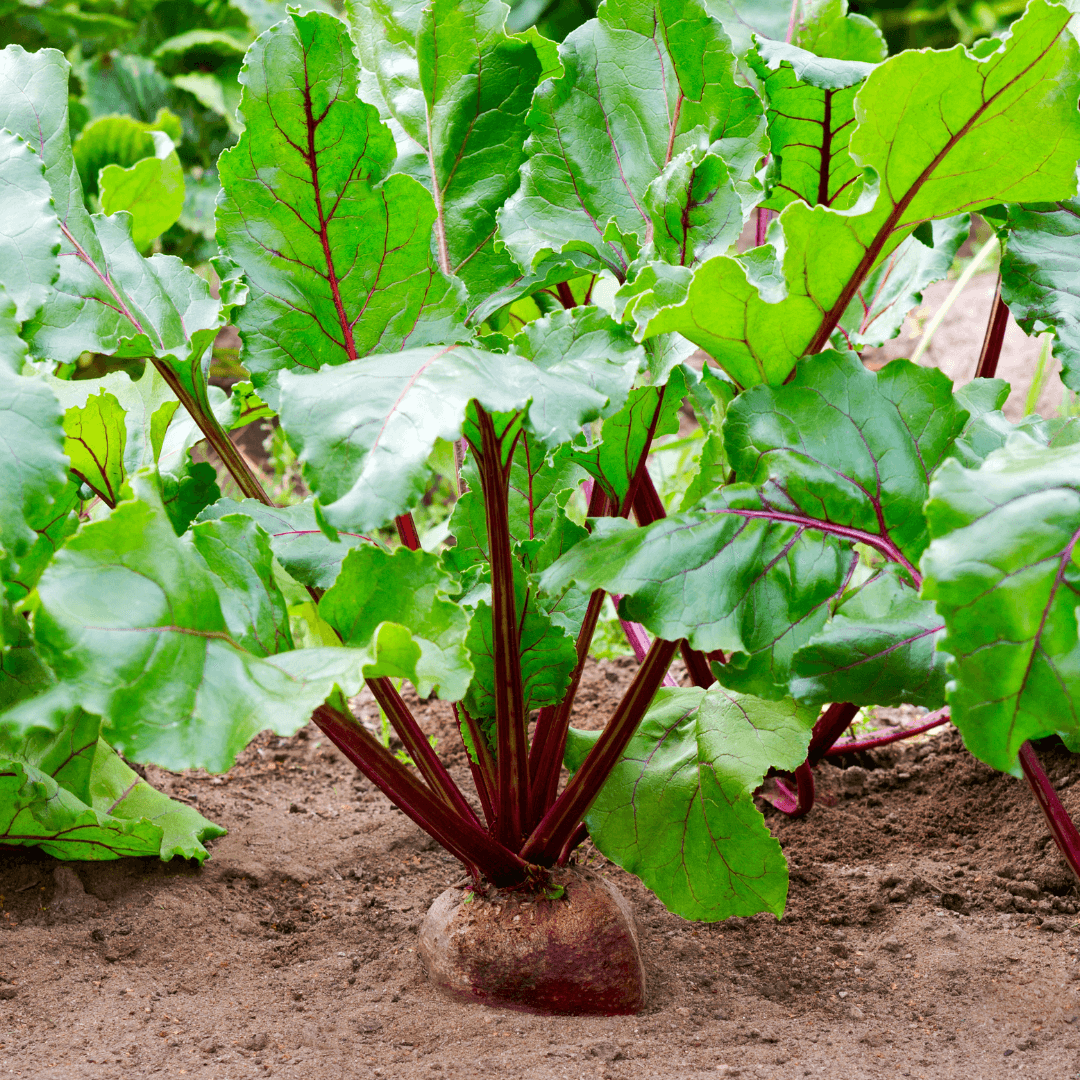Learning how to grow beets from seeds in your garden is fun because you can plant so many varieties of beets that you cannot buy in the store. Growing beets is also easy and they are a crop that can be planted multiple times a year.
Germinating Beet Seeds: Everything You Need to Know
Growing beets from seed is a rewarding experience that can yield a bountiful harvest of these delicious and nutritious root vegetables. However, to get started, you need to know how to germinate beet seeds properly. Here's everything you need to know:
- Start with fresh beet seeds The first step to successful beet seed germination is to start with fresh, high-quality seeds. Old seeds or seeds that have been improperly stored may not germinate as well or may not germinate at all. Check the date on the seed packet or purchase new seeds to ensure optimal germination rates.
- Choose the right planting location beets to prefer to grow in cool weather, so it's best to plant them in early spring or late summer. Choose a sunny location with well-draining soil that has been amended with compost or other organic matter. Avoid planting beets in soil that is too compacted or heavy, as this can inhibit root growth.
- Prepare the soil Before planting, prepare the soil by removing any weeds or rocks and loosening the soil to a depth of at least 6 inches. Mix in a balanced fertilizer or compost to add nutrients to the soil.
- Plant the seeds Plant beet seeds 1/2 inch deep and 1 inch apart in rows that are spaced 12 inches apart. Cover the seeds with soil and lightly water the area. Keep the soil moist but not waterlogged.
- Provide proper care Beets require consistent moisture to germinate, so water the area regularly. Once the seedlings emerge, thin them to about 3 inches apart to allow for proper growth. Fertilize the plants with a balanced fertilizer every few weeks and remove any weeds that may be competing for nutrients.
- Harvest the beets Beets can be harvested when they are about 1 1/2 to 2 inches in diameter. Gently pull them out of the soil, being careful not to damage the roots. Rinse the beets thoroughly and store them in the refrigerator for up to a week.
By following these simple steps, you can successfully germinate beet seeds and grow a healthy crop of delicious beets in your garden.
The Best Time of Year to Plant Beet Seeds
Beets are a cool-season crop that prefers cooler temperatures to grow and mature properly. Therefore, the best time to plant beet seeds will depend on your specific location and climate. Here are some general guidelines to follow:
- Early Spring Planting If you live in a region with mild winters and early springs, you can plant beet seeds as early as late winter or early spring. Planting beets in cool soil temperatures (around 50 degrees Fahrenheit) will help the seeds to germinate and grow properly. Late Summer/Fall Planting For those living in regions with hot summers, planting beets in the late summer or early fall is the best time. As temperatures begin to cool down, beets will grow well in cooler weather. This is particularly true if you want to grow beets for a fall or winter harvest, as they will be able to mature during the cooler months.
- Climate Considerations If you live in a region with a mild climate, you can plant beet seeds throughout the year, as long as the soil temperatures are cool enough. However, if you live in a region with a more extreme climate, it's important to pay attention to the weather patterns and plant beets accordingly. For example, if you live in a region with harsh winters, it's best to plant beets in the late spring or early summer so that they can mature before the first frost.
- Soil Temperatures Soil temperature is a crucial factor when it comes to planting beet seeds. As mentioned earlier, beets prefer cooler soil temperatures to germinate and grow. The ideal soil temperature for planting beet seeds is between 50-60 degrees Fahrenheit. It's important to monitor the soil temperature using a soil thermometer, as planting beets in soil that is too warm or too cold can lead to poor germination rates and stunted growth.
- Experimentation Ultimately, the best time to plant beet seeds will depend on your specific location and climate. It may take some trial and error to find the best planting time for your area, so don't be afraid to experiment with different planting dates and times. Keep track of your results and adjust your planting schedule accordingly in future years.
The best time of year to plant beet seeds will depend on a variety of factors, including your specific location, climate, and soil temperatures. By following these general guidelines and monitoring your soil temperature, you can successfully plant beet seeds and grow a healthy crop of delicious beets in your garden.
Preparing Soil for Growing Beets from Seed
The key to growing healthy and productive beet plants from seed is to prepare the soil properly. Here are some steps to follow to ensure that your soil is ready for planting:
- Test Your Soil The first step in preparing your soil is to test it to determine its pH and nutrient levels. You can do this with a simple soil test kit or by sending a soil sample to a lab for analysis. Beets prefer a soil pH of 6.0 to 7.5, so if your soil pH is outside of this range, you may need to amend it with lime or sulfur to adjust the pH level.
- Clear the Area Remove any rocks, sticks, or other debris from the planting area. Beets grow best in loose, well-draining soil, so it's important to clear the area of any obstacles that may hinder root growth.
- Add Organic Matter Adding organic matter, such as compost or aged manure, to the soil can improve its texture, fertility, and water-holding capacity. Mix in a layer of organic matter to a depth of 4-6 inches, using a hoe or garden fork to work it into the soil.
- Fertilize the Soil Beets are heavy feeders and require a steady supply of nutrients to grow properly. Before planting, apply a balanced fertilizer, such as a 10-10-10 blend, to the soil according to the package instructions. This will provide the necessary nutrients for the seedlings to germinate and grow strong roots.
- Add Soil Amendments Depending on your soil test results, you may need to add additional soil amendments to improve the nutrient content of the soil. For example, if your soil is deficient in phosphorus, you may need to add bone meal or rock phosphate. If it's deficient in potassium, you may need to add wood ash or sulfate of potash.
- Till the Soil Tilling the soil with a garden tiller or cultivator can help to loosen compacted soil and improve its drainage. Be careful not to till too deeply, as this can damage the roots of nearby plants.
- Water the Soil Before planting, water the soil thoroughly to ensure that it is moist and ready for planting. Be sure not to water too much, as this can lead to waterlogged soil and poor germination rates.
By following these steps, you can prepare your soil for growing healthy and productive beet plants from seed. With proper soil preparation, your beets will be able to grow strong roots, absorb the necessary nutrients, and produce a bountiful harvest of delicious and nutritious beets.
Watering Beets: How Often and How Much?
Watering is a crucial part of growing healthy and productive beet plants from seed. However, it's important to water your beets properly to avoid overwatering or underwatering. Here are some tips on how often and how much to water your beets:
- Monitor Soil Moisture The best way to determine when to water your beets is to monitor the soil moisture. Stick your finger about an inch into the soil near the base of the plant. If the soil feels dry to the touch, it's time to water. If the soil feels moist, you can hold off on watering for a day or two.
- Water Deeply When you do water your beets, be sure to water them deeply. This means watering the soil to a depth of at least 6 inches. Shallow watering can lead to shallow root growth, which can make your beets more susceptible to drought and other stresses. To water deeply, apply water slowly to the base of the plant until the soil is saturated.
- Water in the Morning It's best to water your beets in the morning, as this allows the foliage to dry before nightfall. Wet foliage at night can increase the risk of fungal diseases, such as powdery mildew. Watering in the morning also ensures that the plants have enough moisture to get through the hottest part of the day.
- Don't Overwater Overwatering your beets can lead to waterlogged soil, which can cause the roots to rot and the plants to wilt. To avoid overwatering, wait until the soil has dried out slightly before watering again. In general, beets need about 1 inch of water per week, including rainfall.
- Mulch the Soil Mulching around your beet plants can help to retain moisture in the soil and reduce water loss through evaporation. Apply a layer of organic mulch, such as straw or leaves, to the soil around the plants. This can also help to suppress weeds and keep the soil cool.
- Adjust for Climate The amount and frequency of watering may need to be adjusted depending on your climate and weather patterns. In dry or hot weather, you may need to water more frequently to ensure that the soil stays moist. In cool or humid weather, you may need to water less frequently to avoid overwatering.
By following these tips, you can water your beet plants properly and help them to grow strong, healthy roots and produce a bountiful harvest of delicious and nutritious beets.
Fertilizing Beets: Tips for Optimal Growth
Fertilizing is an important part of growing healthy and productive beet plants from seed. However, it's important to fertilize your beets properly to avoid overfertilizing or under fertilizing. Here are some tips for fertilizing your beets:
- Choose the Right Fertilizer Beets to require a balanced fertilizer that contains equal parts of nitrogen, phosphorus, and potassium (N-P-K). Look for a fertilizer with an N-P-K ratio of 10-10-10 or similar. You can also use organic fertilizers, such as compost or aged manure, which can provide additional nutrients and improve soil fertility.
- Apply Fertilizer at the Right Time It's important to apply fertilizer at the right time to ensure that your beets receive the necessary nutrients throughout their growth cycle. Apply a balanced fertilizer at planting time and again when the plants are about 4-6 inches tall. You can also apply a light top dressing of fertilizer around the base of the plants midway through the growing season.
- Don't Overfertilize Overfertilizing your beets can lead to excessive leaf growth and reduced root development. This can result in small, misshapen beets that are not as flavorful or nutritious as they could be. To avoid overfertilizing, follow the package instructions and don't apply more fertilizer than recommended.
- Supplement with Micronutrients In addition to the primary macronutrients (N-P-K), beets also require micronutrients, such as boron, zinc, and magnesium. These micronutrients are essential for healthy growth and development. You can supplement your fertilizer with micronutrients by using a foliar spray or applying a micronutrient-rich fertilizer.
- Use Organic Fertilizers Organic fertilizers, such as compost and aged manure, can provide a slow-release source of nutrients that can improve soil fertility and support healthy plant growth. They also help to improve soil structure, increase water-holding capacity, and promote beneficial soil microorganisms. However, organic fertilizers may not provide all of the necessary nutrients in the correct balance, so it's important to supplement with additional fertilizer as needed.
- Adjust for Soil Conditions The amount and frequency of fertilizing may need to be adjusted depending on the nutrient content of your soil. If your soil is naturally rich in nutrients, you may not need to fertilize as often or as heavily. Conversely, if your soil is nutrient-deficient, you may need to fertilize more frequently or apply a higher concentration of fertilizer.
- Watch for Signs of Nutrient Deficiencies Beets can show signs of nutrient deficiencies, such as yellowing leaves, stunted growth, and poor root development. If you notice these signs, it may be a sign that your plants are not receiving enough of a specific nutrient. Consult a gardening expert or use a soil test kit to determine which nutrient is lacking and adjust your fertilizing accordingly.
By following these tips, you can fertilize your beet plants properly and help them to grow strong, healthy roots and produce a bountiful harvest of delicious and nutritious beets.
Thinning Beet Seedlings: Why and How to Do It
Thinning is an important step in growing healthy and productive beet plants from seed. Thinning involves removing some of the seedlings to provide enough space for the remaining plants to grow and develop properly. Here's why and how to thin your beet seedlings:
- Why Thin Seedlings Beet seedlings need enough space to grow and develop strong, healthy roots. If they are planted too closely together, they may compete for water, nutrients, and sunlight, which can result in stunted growth and poor root development. Thinning allows the remaining plants to have enough space to grow and thrive.
- When to Thin Seedlings Beet seedlings should be thinned when they are about 1-2 inches tall and have at least one set of true leaves. At this point, you can see which seedlings are the strongest and healthiest and which ones may be struggling.
- How to Thin Seedlings To thin your beet seedlings, gently pull out the weaker seedlings, leaving about 2-3 inches of space between the remaining plants. Be careful not to disturb the roots of the remaining seedlings, as this can damage their delicate root systems.
- Use Thinnings as Microgreens The thinned seedlings can be used as microgreens in salads, sandwiches, or as garnish. They have a mild, sweet flavor and are packed with nutrients, making them a tasty and nutritious addition to your meals.
By thinning your beet seedlings, you can help them to grow and develop properly and increase the chances of a healthy and productive harvest. Don't forget to use the thinnings as microgreens or transplant them to another area of your garden to reduce waste and make the most of your seedlings.
Preventing Pests and Diseases in Your Beet Plants
Pests and diseases can wreak havoc on your beet plants and reduce your harvest. Here are some tips for preventing pests and diseases in your beet plants and best practices on how to grow beets from seeds:
- Start with Healthy Plants The first step in preventing pests and diseases is to start with healthy plants. Choose beet seeds from a reputable source and make sure they are free from disease or insect damage. Avoid planting beets in soil that has previously been affected by pests or diseases.
- Rotate Crops Rotating crops can help to prevent the buildup of pests and diseases in the soil. Don't plant beets in the same area of your garden for more than two years in a row. Instead, rotate with other crops, such as legumes or brassicas.
- Practice Good Hygiene Practice good hygiene in your garden to prevent the spread of pests and diseases. Keep the garden clean and free of debris, and dispose of any infected plants or plant parts promptly. Wash your hands and tools before and after working in the garden to prevent the spread of disease.
- Use Natural Pest Control Methods Use natural pest control methods, such as companion planting or insect-repelling plants, to discourage pests from your beet plants. Plant marigolds or other insect-repelling plants around your beet plants, or plant them with companion plants that attract beneficial insects, such as ladybugs or lacewings.
- Monitor for Pests and Diseases Regularly monitor your beet plants for signs of pests and diseases. Look for yellowing or spotted leaves, holes in the foliage, or chewed stems. If you notice any signs of pests or diseases, take action immediately to prevent further damage.
- Use Organic Pesticides as a Last Resort If all else fails, you may need to use organic pesticides to control pests and diseases. Look for products that are safe for use on edible plants and follow the package instructions carefully. Use pesticides as a last resort and only when necessary, as they can harm beneficial insects and pollinators.
- Prevent Common Beet Pests and Diseases Some common pests and diseases that affect beet plants include aphids, root maggots, and powdery mildew. To prevent these pests and diseases, avoid overwatering, provide proper air circulation, and maintain good soil fertility. You can also use row covers or insect netting to protect your plants from pests.
By following these tips, you can prevent pests and diseases from damaging your beet plants and enjoy a healthy and productive harvest of delicious and nutritious beets.
Harvesting Beets: When and How to Do It
Harvesting beets is a rewarding experience and the culmination of all your hard work in the garden. Here's when and how to harvest your beets for the best results:
- Determine the Maturity of Your Beets Beets are ready to harvest when they reach maturity, which is typically around 60-70 days after planting. You can tell that your beets are mature by looking at the size of the beet bulb. When the beet bulb is about 1-3 inches in diameter, it's ready to be harvested.
- Harvest at the Right Time of Day It's best to harvest your beets in the early morning or late afternoon when the temperatures are cooler and the plants are less stressed. This will help to prevent wilting and damage to the beetroots.
- Loosen the Soil Before harvesting your beets, loosen the soil around the plants with a garden fork or trowel. This will make it easier to remove the beets without damaging the roots.
- Pull or Cut the Beets You can either pull the beets out of the ground by their tops or cut them off at the base of the plant with a sharp knife. Be careful not to damage the roots or the foliage when harvesting.
- Trim the Tops After harvesting your beets, trim off the tops, leaving about 1-2 inches of stem attached to the bulb. This will help to prevent moisture loss and keep the beets fresh longer.
- Store the Beets Properly Store your harvested beets in a cool, dry place, such as a root cellar or refrigerator. Beets can be stored for several weeks to several months, depending on the storage conditions. Keep them away from ethylene-producing fruits and vegetables, such as apples and bananas, as this can cause the beets to spoil more quickly.
- Use the Greens Don't throw away the beet greens! They are edible and packed with nutrients, such as vitamin C, vitamin K, and iron. Use them in salads, and smoothies, or sauté them with garlic and olive oil for a tasty and nutritious side dish.
By following these tips, you can harvest your beets at the right time and in the right way to ensure that they stay fresh and flavorful for as long as possible.
Companion Planting for Beets: Which Plants to Grow with Beets
Companion planting is the practice of growing different plants together that can benefit each other in some way. Here are some companion plants that are beneficial to grow with beets:
- Beets and carrots make great companion plants, as they both have similar soil and nutrient requirements. Carrots also help to loosen the soil, which can benefit the growth and development of beetroots.
- Garlic and onions are excellent companion plants for beets, as they can help to repel pests and diseases. They also have a strong scent that can mask the scent of the beet plants, making them less attractive to pests.
- Lettuce is a great companion plant for beets, as it can help to shade the soil and retain moisture. It also has shallow roots that won't compete with the deeper-rooted beets for water and nutrients.
- Cabbage Family Plants Plants in the cabbage family, such as broccoli, cauliflower, and kale, can also be beneficial companion plants for beets. They have similar soil and nutrient requirements and can help to deter pests and diseases.
- Marigolds are excellent companion plants for beets, as they can help to repel pests and attract beneficial insects, such as ladybugs and lacewings. They also add a pop of color to your garden and are easy to grow from seed.
By planting these companion plants with your beets, you can create a healthy and thriving garden ecosystem that benefits all of your plants.
Preserving Beets: How to Store and Preserve Your Harvest
If you've grown a bumper crop of beets, you may be wondering how to store and preserve them for later use. Here are some tips for preserving your beet harvest:
- Store in a Cool, Dry Place After harvesting your beets, store them in a cool, dry place, such as a root cellar or refrigerator. Beets can be stored for several weeks to several months, depending on the storage conditions.
- Freeze or Can Beets You can also preserve your beets by freezing or canning them. To freeze beets, cook them until tender, remove the skins, and slice or dice them as desired. Pack them into airtight containers and freeze them for later use. To can beets, first cook them until tender, then remove the skins and slice or dice them as desired. Pack them into canning jars, leaving about 1 inch of headspace, and process them according to the instructions for your canner.
- Make Beet Pickles Another delicious way to preserve your beet harvest is to make beet pickles. You can make pickled beets using a variety of recipes, including sweet, spicy, or tangy. Pickled beets can be stored in the refrigerator for several weeks or canned for longer-term storage.
- Dehydrate Beets Dehydrating beets is another option for preserving your harvest. To dehydrate beets, slice them thinly and place them on a dehydrator tray. Dry at 135°F until crisp, which can take 8-12 hours. Once dehydrated, store in an airtight container in a cool, dry place.
- Make Beet Powder You can also make beet powder from your harvested beets. To make beet powder, first slice or dice your beets and steam them until they are tender. Then, puree them in a blender or food processor until smooth. Spread the puree on a dehydrator tray and dry at 135°F until completely dry, which can take 8-12 hours. Once dried, grind the beet chips into a powder using a spice grinder or mortar and pestle.
By using these preservation methods, you can enjoy your beet harvest for months to come and reduce food waste in the process. When you know how to grow beets from seeds you can grow so many beets that you need ideas on how to use them!
In conclusion, learning how to grow beets from seeds can be a rewarding and satisfying experience. By following these tips for planting, watering, fertilizing, thinning, preventing pests and diseases, harvesting, companion planting, and preserving, you can grow healthy and productive beet plants and enjoy a bountiful harvest of delicious and nutritious beets.
Thanks for visiting our store and checking out our varieties of beet seeds.
Detroit Dark Red Beet Seeds
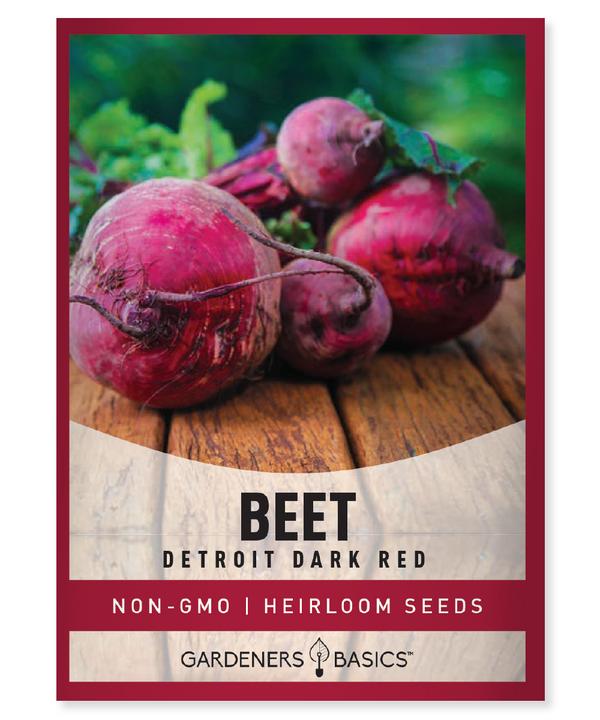
$2.49
Detroit Dark Red Beet Seeds – Heirloom, Non-GMO, Non-Hybrid, Open-Pollinated – Planting and Growing Guide Discover the classic Detroit Dark Red Beet, a top choice for gardeners who love rich, sweet, and earthy flavors in their vegetables! Our heirloom Detroit… read more
Frequently Asked Questions (FAQs)
Q: How deep should I plant beet seeds?
A: Plant beet seeds about 1/2 to 1 inch deep.
Q: How often should I water my beet plants?
A: Water beet plants deeply once a week, or more often in hot, dry weather.
Q: How often should I fertilize my beet plants?
A: Fertilize beet plants once a month with a balanced fertilizer, such as a 10-10-10.
Q: What kind of soil do beets prefer?
A: Beets prefer well-draining soil that is rich in organic matter and has a pH of 6.0 to 7.5.
Q: How many beet plants should I thin to per row?
A: Thin beet plants to 2-3 inches apart to ensure they have enough room to grow.
Q: What are some common pests and diseases that affect beet plants?
A: Common pests and diseases that affect beet plants include aphids, root maggots, and powdery mildew.
Q: Can I eat beet greens?
A: Yes, beet greens are edible and packed with nutrients, such as vitamin C, vitamin K, and iron.
Q: How do I store beets for later use?
A: Store beets in a cool, dry place, such as a root cellar or refrigerator. You can also freeze, can, pickle, dehydrate, or make beet powder from your harvested beets.



